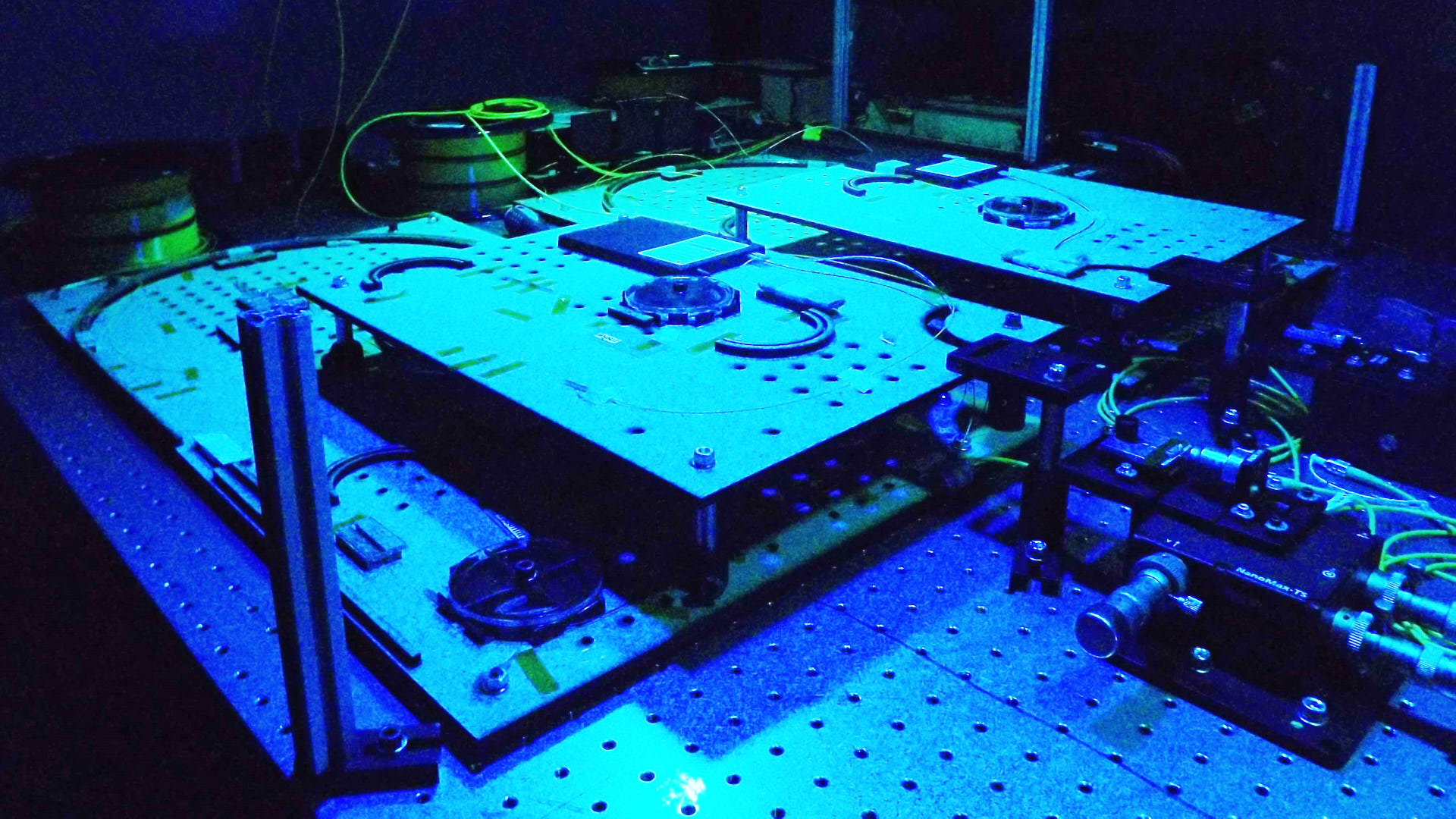Project status
In progress
Duration
Open-ended
In progress
Open-ended

The fundamental building block (or 'quantum') of light is the photon. Pulses of light can be populated by any number of photons, as well as quantum superpositions of all possibilities. They can also be 'entangled', where the number of photons in separate beams are related to each other in a way that transcends classical physics and gives rise to strange phenomena. Quantum optics is the study of light at this most fundamental level.
Technologies that exploit controlled quantum systems can achieve significant performance enhancements in areas such as computation, communications, and sensing. For example, the current race to scale up towards a fully-programmable quantum computer could result in vast reductions in the time taken to simulate the interactions of large molecules, and commensurate acceleration of pharmaceutical drug development. Photons provide one of the most promising approaches to realising this potential.
Working precisely with light at the quantum level is hard. Photons are unimaginably tiny - a small laser pointer emits many quadrillions of photons every second! Even so, with modern technology it's possible to create and measure just a single photon in our labs. At Bath we carry out research into how we can reliably generate beams of light with the right quantum properties, and how we can manipulate them to store, process and transmit quantum information. We make specialist optical fibre here in the CPPM's fabrication facility, which interacts with bright laser beams to spontaneously generate photon pairs. These can then be used either to generate "heralded" single photons or so-called "squeezed" light, which can be used in quantum computing, sensing, and communications.
Building a quantum computer based on light requires logic gates, much like those in a conventional computer. However, because photons do not interact with one another, the gates that we can build rely on interference between photons and do not always work. We are building quantum memories that store photons in atomic clouds to be read out later. Long-lived quantum memories can synchronise operations across large-scale networks, enabling the development of more complex quantum processors.
The optical properties of alkali metal vapours render them highly desirable for applications including sensing, precision spectroscopy, laser frequency stabilization, atomic clocks, and quantum memories. The potential for deploying warm dense alkali-metal vapours in quantum technologies is limited by the difficulty of creating miniature vapour cells that can maintain high optical densities over extended periods of time while at the same time being compatible with optical fibre networks.
Hollow-core optical fibre fabricated in our research-grade cleanroom facility in Bath is an ideal platform for interactions between light and Rb vapour contained in its core. We are developing techniques to fill fibres with rubidium vapour with a dedicated high-vacuum system. In addition, we study how the filled hollow-core fibre can be combined with high-efficiency connections to conventional fibre.